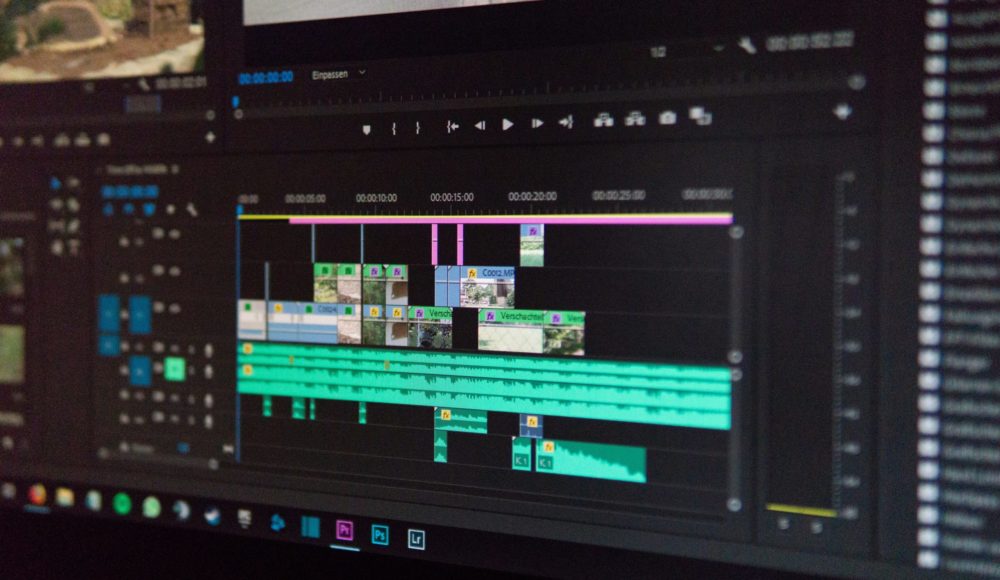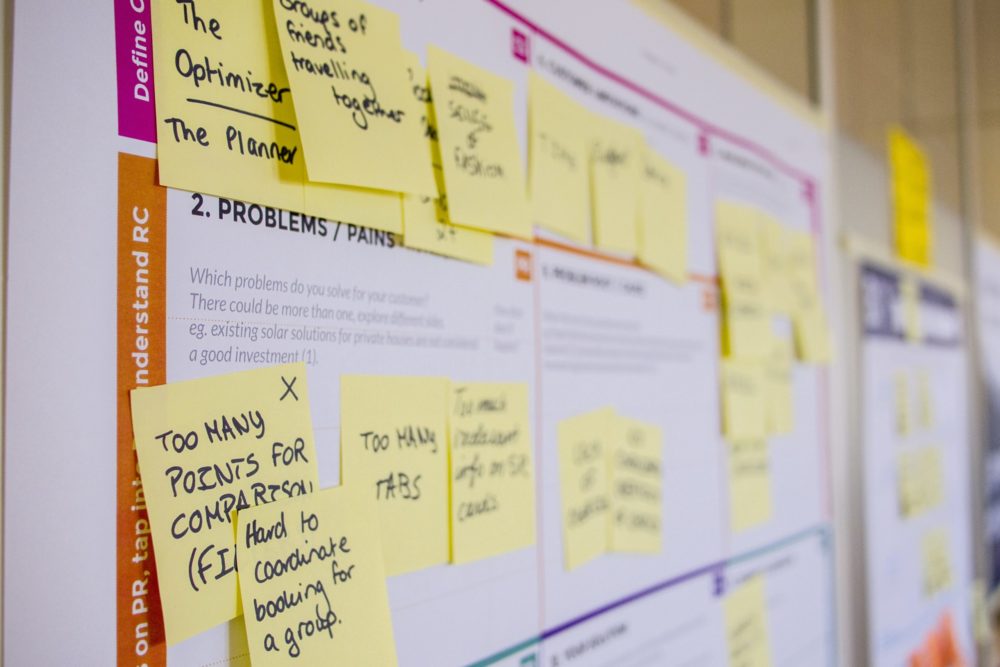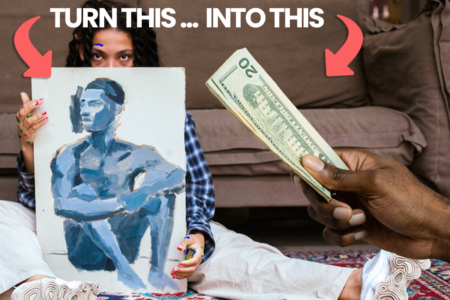An excellent user experience (UX) makes a company stand out from competitors and keeps visitors engaged. A UX designer has a unique set of design skills developed over time and with intense study.
The goal of the designer is to enhance site visitors’ experiences and ensure positive customer service. There is no standard for how to become a UX designer, but more a set of skills to learn.
The top 10% of UX designers make around $71,753 per year, with a median salary of $60,297 for 66%. Base salary varies, depending on your level of experience and region.
However, the specialized front-end skills a UX designer needs means the pay is more than a designer without specialized skills.
Money Note: If an extra $1K–$5K/month would change your 2026 goals (debt, savings, travel, freedom), you’ll want to catch this: free live workshop from a freelancer who’s earned $4M+ online. No fluff. No gimmicks. A real roadmap. 👉 Watch the training or save your seat here »
If you’ve been thinking about how to become a UX designer, now is the time to jump into the job pool. In a 2019 study, researchers found UX designer was the second most sought after role for design professionals.
What is a UX Designer?
As a UX designer, you’ll combine market research, client strategy and design to create a seamless user experience for process, services and products.
Although UX designers build websites, they also help develop products, branding strategy and customer service models. The idea is to create an entire experience for consumers meshing together as a whole.
How to become a UX designer includes creating digital or physical products that are easy to use and intuitive to customer needs. Some of your responsibilities as a UX designer include:
- Make a product useful to users
- Research products and how people use them
- Create targeted buyer personas
- Design information architecture
- Establish wireframes and gather client input
- Test products to make sure they meet standards
The roles of a UX designer fluctuate, depending upon the company they work for and the task at hand. The training for how to become a UX designer varies, depending on what areas you’d like to specialize in.
10 Steps on How to Become a UX Designer
When it comes to learning how to become a UX designer, some people choose to start with formal schooling, and others prefer to learn on their own.
While there isn’t a best way to gain the expertise you need, some types of jobs may prefer a formal education or offer promotions to those with a degree.
Follow these steps, but be aware you may want to complete some of them out of order or skip sections if it makes sense for the specific title you wish to land.
1. Learn Basic Skills
You might enroll in a university program teaching basic multimedia design and project management skills. There are a few schools with notable UX design degree programs, including:
- New York University in New York City offers an Integrated Digital Media four-year program.
- Massachusetts Institute of Technology offers a graduate program in media arts and sciences.
- The University of Waterloo in Ontario offers a Global Business and Digital Arts four-year program.
If you already have a degree or prefer not to go back to school, some training options don’t involve a college career. You can work through these online programs at your own pace and supplement them with a local community college course or two.
- The University of California offers a two-year course online in Interaction Design Specialization.
- Udemy has hundreds of courses on UX topics so that you can brush up on your skills in many areas.
- Lynda offers a pay-as-you-go model so that you can ramp up your UI and UX skills.
UX designers often have degrees in areas like:
- Graphic design
- Visual design
- Web programming
- Information architecture (AI)
- User interface design (UI)
- Computer science
Make a list of some of the skills you might lack and seek out courses training you in those areas. With a bit of determination, you’ll gain the needed requirements to be a valuable UX asset to your company.
2. Master the Tools of the Trade
There are some tools UX designers use over and over, such as Adobe Photoshop, InDesign and prototyping options. However, you’ll also want to master:
- Researching buyer behavior through platforms such as Google Analytics
- Testing users through A/B platforms and figuring out multivariate testing methods
- Studying data and putting it into easy to understand charts and visual models
- Collaborating with other team members through online platforms and prototyping
If there is a particular company you’d like to work for, pay attention to their job listings. They’ll often mention the exact software they want you to have experience with. You can then brush up on your skills for the platform.

They may want you to have worked with programs such as Sketch, Adobe XD and Photoshop.
3. Perfect The UX Design Process
There are four phases in the UX design process, including:
1. User Research
2. Design
3. Testing
4. Implementation
When you’re working with others on a project, they’ll expect you to be familiar with the steps. While you might not use every phase for every project, knowing them helps you determine when to use what creative procedure. Within each of the phases are additional things you’ll do to improve user experience.
4. Attain Design Knowledge
Perhaps you have a degree in design. However, many people come out of college with design degrees and no idea how to implement them into projects. The user experience won’t be a good one if there isn’t a nice balance of colors, white space and visually appealing elements.
Some elements you’ll need to make sure you understand include:
- Color psychology
- Complementary and contrasting colors
- Use of positive and negative space
- When to use visual elements
- How to draw the user’s eye to specific features
- Ways to use shapes to add interest
- Scaling for different sizes
- What kinds of typography to use and when
Read design blogs to discover additional hints and tips. Pay attention to trends by watching sites such as Dribbble and Medium. Consider what sites win awards for usability.
5. Find a Mentor
There are tools of the trade you can only discover on the job. It’s impossible to learn how to satisfy an irate client from a textbook. Life experience and people skills are the only way to get through some of the situations you’ll face in your first design job.
A mentor can help you navigate the waters and prepare you for problems you might not expect. They’ll also offer tips you won’t find anywhere else because they have on-the-job experience.
Where do you find a mentor? You can try:

- Seeking out someone you admire in the field
- Joining networking associations in your industry
- Taking on a relevant internship
- Finding someone who will challenge you
- Seeking out an online mentor
- Talking to an old professor
6. Gain Experience
Most employers want someone with experience in UX design. The more jobs you’ve worked, the less they’ll have to hold your hand. While still in college, seek out internships at local companies.
Look for places that can teach you a wide variety of skills. Don’t just go back to the same business every summer, but develop a wide range of design expertise from different fields.
If you’ve already graduated from school or plan to learn UX on your own, here are some other ways to gain additional experience:
- Ask your employer for a side job designing with usability in mind. Look for unfilled opportunities, such as a new project where the focus isn’t yet on user experience.
- Volunteer to help a local nonprofit. They may have a designer on their payroll but not be able to afford more people to take on an overwhelming number of tasks.
- Help a friend for free. Is your best friend starting a new business? Offer to design a UX website in exchange for using clips to show potential employers what you’re capable of.
- Make mock samples based on the type of work you want to do. When you apply for jobs, you can use these samples to show off your skills and abilities.
When figuring out how to become a UX designer, the more clips you have for your portfolio, real or pretend, the better the employer can see what you’re capable of and that you’ve worked hard to gain experience in your chosen field.
7. Practice UX Design at Your Current Job
If you’re already working full time, you might not have as many chances to volunteer or find internships. However, you can still put your UX skills to good use and practice developing new ones.
Approach your leadership about your future career goals and how you’d like to apply UX principles to some of the current projects on your plate. Keep a log of what you do so that you can share it with employers in the future.
You never know, your current employer may be on the lookout for a new UX designer and willing to let you experiment on projects and hone your methods. They might even offer you a promotion into the position you most want, giving you a perfect opportunity to gain on-the-job experience and move up in your chosen field.
If your company isn’t on board with the UX concept, go ahead and redesign it on your own time to see what you’re capable of. You’ll still gain additional practice in the field and strengthen your UX design skills.
8. Build an Amazing Portfolio
How to become a UX designer involves developing a portfolio highlighting specific skills. If you’ve done your homework on the job you’re applying for, you’ll already know what skills they’re looking for, and you can hone your presentation down to the key points most impressive to each position.
A digital portfolio allows you to refine the offerings for each job you apply to.
Building a portfolio takes time and dedication, though you won’t ever truly finish it. Look at each new project you complete, and decide if it makes a better example than ones you already have or if you should add it to other projects you’ve already included.
Five elements that make an excellent portfolio include:
1. Context or the initial assignment/problem
2. Scope or the internal and external challenges
3. Rationale or the process you used to determine the design
4. Visuals of the finished design
5. Impact or how people viewed the finished product
You can turn to online portfolio sites such as Behance or Medium to highlight your projects and explain the process. You could also use a WordPress blog or a simple gallery website to show off your skills.
Remember to think about the abilities the interviewer wants to see and include projects highlighting your acumen in those areas.
9. Pick Up Secondary Skills
How to become a UX designer is about more than just learning a few specific skills and gaining experience. You’ll need to pick up some secondary expertise and learn the basics of design and front-end development.
Business Communication: You’ll need the ability to communicate with your team, clients and the end-user. Collaboration is much smoother when everyone knows what the goal is and feels free to share their ideas. You can improve communication skills by reading up on business writing or taking a Dale Carnegie course.
Public Speaking: You may need to do presentations from time to time for clients and your employers, so make sure you’re comfortable in front of an audience.
Time Management: As a UX designer, you’ll head up many different types of projects. You may even find yourself juggling several teams at once. You must learn good time management skills, or you’ll waste a lot of time.
Know how to divide tasks into categories of importance using a method such as ABCs with A being the most critical projects needing attention first.
Learn which planners work best for your needs and use them religiously. A calendar can also help you become better organized and keep you from forgetting urgent appointments and deadlines. Know when good enough works and don’t try to be such a perfectionist that you never complete a job.
10. Keep Learning
Technology is in constant flux. For example, about one in every four adults in the U.S. now owns a smart speaker, something that wasn’t very common a mere five years ago. Different devices change the way people surf the internet and gather information.
You need to know how various changes impact the usability of a product. If you’re designing a website and 25% of your visitors come in via Alexa or Google Home, you need to make your site voice search-friendly.
Design trends and the way people view the world changes from month to month. Stay on top of changes in your industry and learn how to apply new devices as the Internet of Things (IoT) expands.
You’ll be in higher demand if you understand a changing world and how it impacts the target audience.
Is Becoming a UX Designer Right for You?
Now that you know some of the steps needed in how to become a UX designer, you should have a good idea of the responsibilities involved in the work. Is UX design the right career choice for you?
If you enjoy managing teams of people and brainstorming for solutions, you’ll love this work. If you like to make sure a design has a look appealing to the human eye and help people solve their problems, you’ll be a perfect fit for a UX design role.
Landing your first job as a UX designer requires a wide variety of skills, and quite a bit of experience. It isn’t a path for the faint of heart, so make sure you genuinely enjoy the work before investing years of work into honing the craft.
Nevertheless, this career path is highly rewarding, and you can make an excellent median salary starting out. As you add to your skill level and become a UX project manager, you can expect to creep closer to the six-figure mark.
There are other jobs you can take on that require less training and pay similar wages. That’s why design work has to be a labor of love. Learning how to become a UX designer is the right choice for you if you’re detail-oriented and enjoy creating something to help others.
Keep the conversation going...
Over 10,000 of us are having daily conversations over in our free Facebook group and we'd love to see you there. Join us!





